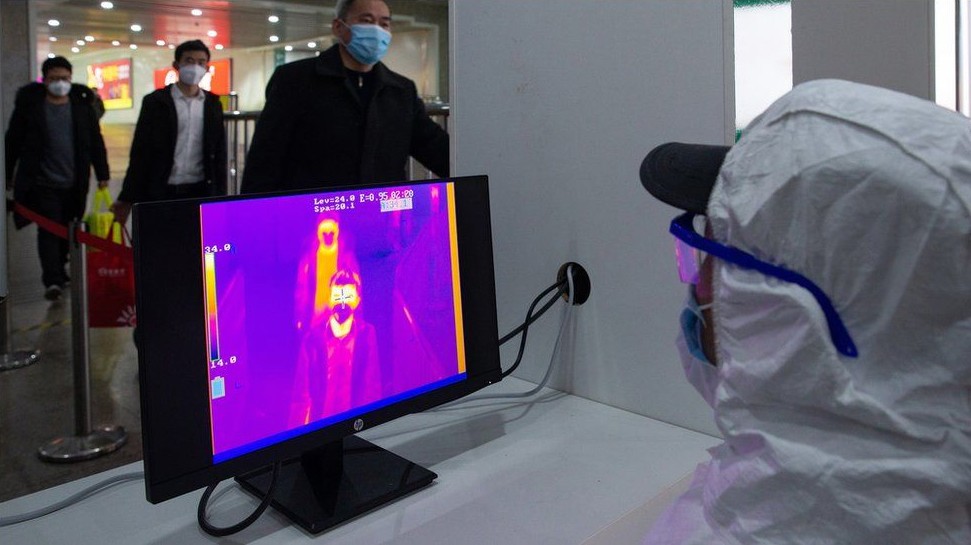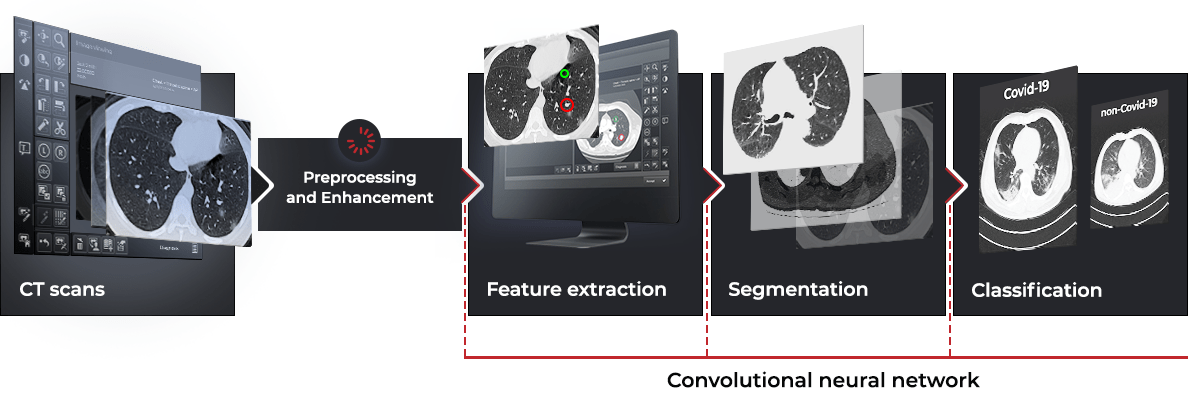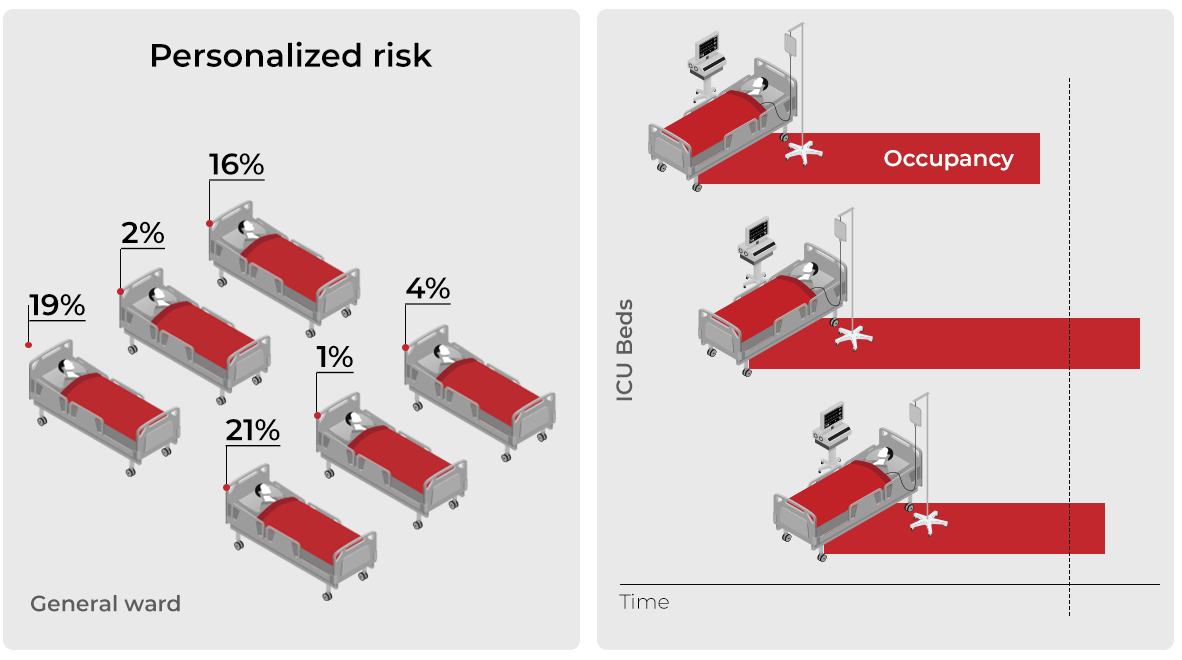With total coronavirus cases passing the nine million mark, the COVID-19 pandemic has put an unprecedented pressure on the global economies and stretched the limited healthcare resources too thin.
To help get through these troubled times, the healthtech industry is rising to the challenge and offering its advancements in the most promising technology — artificial intelligence. With the ability to analyze huge amounts of data, process human speech, recognize objects and faces, artificial intelligence can become our ace card in the battle against the pandemic. It can significantly relieve the strain by helping with diagnosing, monitoring, and even drug discovery.
With AI development services being in high demand today, let’s see how the technology can drive a positive impact.
Intelligent triage
One of the major problems with coronavirus is its exponential growth. Hospitals are already overwhelmed as the numbers of coronavirus patients are escalating on a daily basis. To help care providers boost capacity, dorms, hotels, exhibition centers, and convention halls are now converted into coronavirus field hospitals.
Artificial intelligence can significantly improve pre-hospital triage to deal with the influx of patients more effectively. Removing the need for physical contact, an AI-driven video-based telehealth solution can be used to perform online screening, assess the risk of a patient suffering from COVID-19 and determine further actions, whether it’s relevant recommendations, a virtual consult, or referral to a local medical facility.
Tech companies are helping hospitals by launching coronavirus self-checkers — AI-powered healthcare bots that ask a series of questions to determine whether your symptoms are related to COVID-19 and your need to seek medical care. These bots can also provide accurate, clinically-vetted information about coronavirus and protection measures and keep people informed on the current situation, any lockdowns and closings.
How we can help
Experts in scalable real-time communication, we bring these capabilities into the healthcare domain to deliver bespoke telemedicine solutions that are secure, reliable, and HIPAA-compliant.
Tell us more about your video-based telehealth needs.
Real-time temperature screening
To contain the spread of the highly contagious virus, it is critically important to monitor and screen the population in real time to identify who might be affected. However, traditional manual temperature checks can hardly be performed at the scale and speed needed, let alone the risk of cross-infection.
Tech giants in China, which was hit first, were quick with their digital response to the challenge. Baidu introduced an AI-powered temperature screening system that leverages infrared sensors to identify individuals with a fever in a passenger flow, prompting staff to perform secondary checks. With the ability to screen hundreds of passers-by per minute from a distance of several meters, the system is successfully used at major railway stations.

Source: BBC News
Fever detection systems
Another AI-enabled thermal screening tool is being developed in Singapore by a healthcare agency IHiS and a tech startup Kronikare. The solution is basically a smartphone fitted with thermal and 3D laser cameras — while AI algorithms identify facial features, the thermal camera measures the temperature, and the laser camera determines the distance. Used at the entrances to office buildings, the solution significantly speeds up the process and minimizes queues.
Facial recognition cameras
Through ages quarantine has been used as the most effective strategy to curb the spread of diseases. The new pandemic is no exception, and authorities are increasingly turning to aggressive quarantine measures and restrictions to take the new pandemic under control.
To enforce these social controls, some countries are leveraging face recognition technology. In Moscow, a network of 170,000 cameras fitted with facial recognition software is used to monitor the population and identify those who violate quarantine and self-isolation restrictions.
With these, some say draconian, measures being justified in the face of the deadly viral outbreak, the moral question remains what happens to this massive surveillance regime after the pandemic. Yuval Noah Harari has nicely put it in his recent article about the world after coronavirus: “Temporary measures have a nasty habit of outlasting emergencies, especially as there is always a new emergency lurking on the horizon.”
Automated CT scan analysis
A more promising area for AI application lies in diagnostics. With COVID-19, there are two most common ways of diagnosing the disease — laboratory testing, known as RT-PCR, and medical imaging-based method, X-ray and CT scans.
To unburden radiologists, inundated with the increasing number of patient chest scans, deep learning algorithms can be trained to analyze CT and X-ray images and identify the affected lung tissue. A recent research in RSNA Radiology suggests that an AI model can detect and differentiate COVID-19 from community acquired pneumonia and other lung diseases.
By automatically scanning and comparing chest scans, these AI-enabled systems can reliably pinpoint the disease in a matter of seconds, not hours. Today, this fast and accurate judgement is particularly important as it can help radiologists expedite diagnosing and accelerate life-saving work.

AI-powered CT image analysis
Accelerate your medical imaging processing
With machine and deep learning our forte, we help organizations harness the power of computer vision and streamline time-consuming processes to enhance diagnostics and improve health outcomes.
Let’s talk.
Data-driven analytics
The potential advantages of using artificial intelligence do not stop with diagnostics. Researchers are now working on applying big data analytics to better assess risks, predict outcomes, and support their decision-making.
By tracking a treatment response and analyzing personal patient data, including demographics, age, pre-existing conditions, and more, deep learning models are able to predict which patients would develop severe respiratory complications and which patients no longer require a ventilator. These insights not only enable doctors to intervene at an earlier stage but also to paint a reliable picture of future resource usage and make informed decisions to achieve maximum efficiency.

Data-driven resource utilization forecast
AI-powered analytics also proves instrumental in mapping and tracking COVID-19. Self-reporting symptom trackers and online screening tools provide huge amounts of valuable data that can be fed to ML algorithms to identify trends and detect hot spots. In addition, by leveraging natural language processing AI tools can comb through social media to pick up hints on population health and uncover even unreported cases, which is the most challenging part in tracking the pandemic.
Accelerated drug discovery
With 200+ countries affected by coronavirus, drug development has become a joint initiative. A great deal of effort is geared towards thorough review of scientific literature, which, given the vast troves of available clinical research, is an impossible task for human intelligence. To streamline the search for information, tech giants like IBM offer cloud-based AI tools trained on the extensive corpus of scientific papers that allow researchers to quickly extract COVID-19 insights.
Some healthtech companies are focused on using AI to test approved drugs in hopes to repurpose existing molecules for coronavirus treatment and accelerate the path to critical trials. Others leverage artificial intelligence to detect novel molecular compounds and screen them against key COVID-19 targets.
This too shall pass
To aid in this battle, the artificial intelligence community is stepping up and innovating at an astonishing pace to empower healthcare providers with better diagnostic, monitoring, and analytical capabilities. Scientists also draw on AI to expedite drug discovery and bring them closer to cure.


























